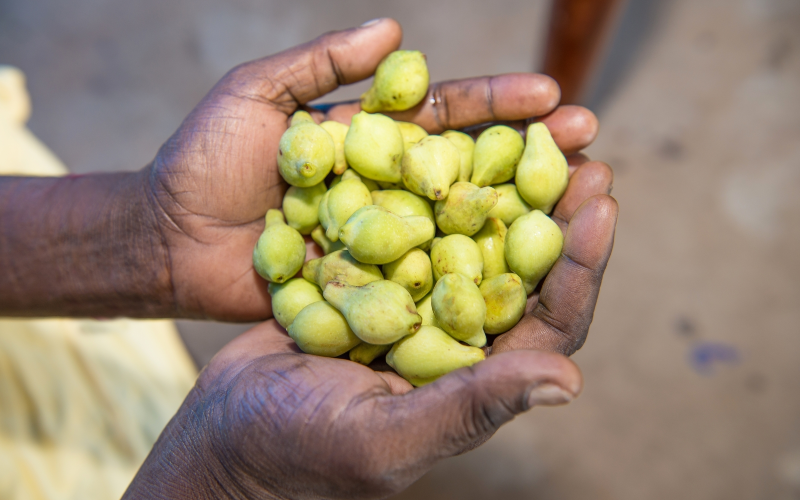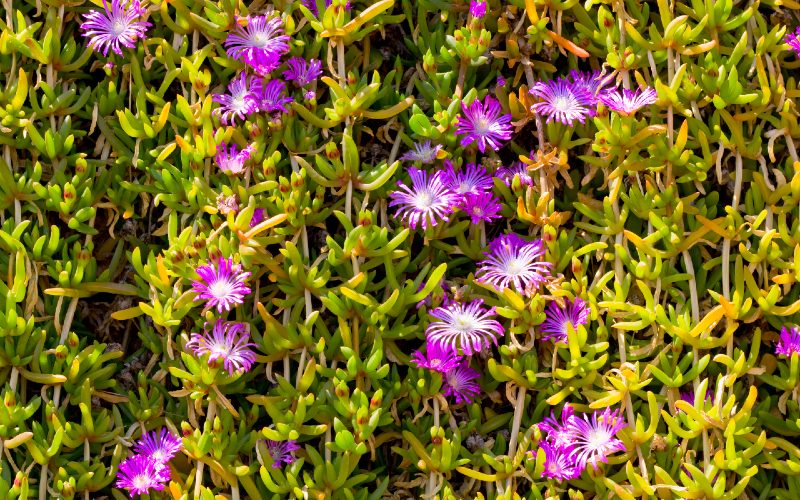Grow a backyard full of native edible plants
Find out more about Australian native plants with edible fruits, nuts, shoots, leaves and roots.
Learn moreSpring is the perfect time to enrich your backyard. From the south or north, WA offers many unique, native blooms. Today, most of our gardens rely on exotic species from overseas. Homegrown, waterwise solutions are often overlooked. But bush tucker has sustained Aboriginal people for thousands of years. They are the ideal plants for our specific climate and soil. And they offer incredible flavours for our plate!
Let’s take a walk together on country and explore the incredible riches of WA.
You may not have heard of Youlk just yet, but this distinct root vegetable is becoming a rising star in the Australian supermarket scene. Also known as Ravensthorpe Radish, Youlk produces a sweet potato looking tuber. Delicious roasted, baked or raw in salads, this crisp native essential offers a tantalising flavour somewhere between a carrot and sweet eucalypt.
Harvesting Youlk requires digging around the base of the plant to expose the many tubers hiding in the soil. It’s best to grow this plant in the ground in full sun however a large pot will still yield homegrown native vegetables to get creative in the kitchen with!

Youlk tubers - image courtesy of tuckerbush.com.au
If you are based in the North West and looking for “a gift from the Dreamtime”, Gubinge has been a source of bush tucker and an antiseptic for thousands of years. Also referred to as the Kakadu Plum or Murunga, this miniature deciduous tree bears an abundant crop of plum-like fruit around May each year. Easy to harvest when soft and ripe, Gubinge has the highest recorded levels of vitamin C content in the world.
Enjoy this native superfood fresh, or slice and dice into jams, preserves, sauces and drinks. Being fibrous and sour it’s sure to add a zing to your morning juice!

Kakadu plums
Often overlooked because of its unfortunate name, the Round Baby Pigface can usually be found rambling along coastal dunes. The very significant succulent has an extensive root system, which plays an important role as a soil stabiliser around our beaches.
Every part of this incredible plant is edible. Salty yet sweet fruits adorn the Pigface throughout the year. Fleshy, juicy leaves make for a great salt substitute and work wonders in salads. The succulent’s flowers give a burst of flavour and even the juice produced has aloe vera-like properties to soothe burns, bites and stings. Hardy, durable and easy to grow, the humble Round Baby Pigface is a must have addition for any WA backyard.

Round Baby Pigface
Imagine opening your windows to let the smell of chocolate waft into the room. The Chocolate Lily’s edible flowers will provide a bright pop of colour from August to February and a distinctive chocolate aroma to your garden. They are a perfect for adorning salads, cakes or biscuits. The lily’s juicy tubers however are the real star of the show. These are particularly delicious when lightly roasted and tossed in salt and butter.
Belonging to the asparagus family, tubers are ready to harvest from September and are best eaten young as they become bitter over time.

Chocolate Lily
Together, let’s bring bush tucker back into the mainstream. Not only do these plants provide local flavours but they are adapted to our harsh climate. By swapping out just one exotic plant for a native substitute, you become part of the greater movement toward cultural and ecological diversity.
Find out more about Australian native plants with edible fruits, nuts, shoots, leaves and roots.
Learn more